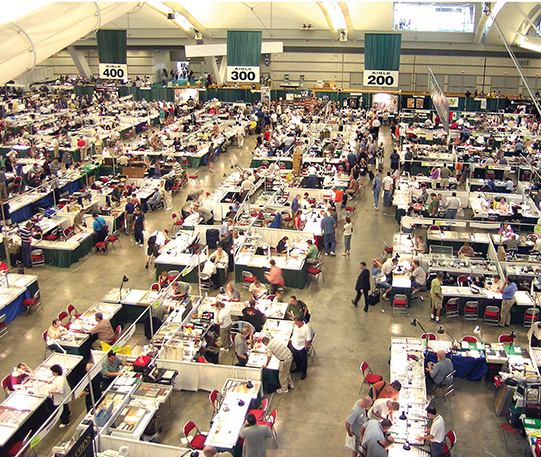
By R.W. Julian
As we make our way through 2020, United States citizens continue to practice safe distancing, and businesses continue to operate under detailed safety protocols and measures, in response to the COVID–19 pandemic that has brought many important matters to a standstill. Ironically, coin collecting was once in this same situation, though not because of a disease or some other disastrous event.
There were collectors, in what is now the United States, before 1776, but they were very few and far between. As far as is known, however, actual collecting did not begin until 1793, with the Philadelphia Mint’s first issues. Only copper cents and half cents were struck in that year, and there is little doubt that interested citizens laid aside nice examples of this first regular coinage.
These first collectors of United States coins were mostly in the Philadelphia area, as the early copper coins were not shipped outside of that city until late in 1794, and, even then, in relatively small numbers. By the summer of 1796, however, distant cities were getting their share of cents and half cents.
The coins of silver and gold were another matter. Coins of these two precious metals were made strictly according to the wishes of the depositor who brought the necessary bullion to the Mint. If the depositor had lived in Baltimore, for example, that city might obtain a reasonable number of gold or silver coins for use in the marketplace.
Accessibility and Population Shape Coin Holdings

Courtesy Goldberg Coins & Collectibles, Inc.
Because of the unpredictable ways copper, silver, or gold coins reached different parts of the country, the novice collector had difficulties adding to his or her holdings. There were no organized clubs or societies that dealt with such matters, and collectors were more or less on their own.
There was one steady source for American coins, however, but it was also restricted to a relatively small part of the population. In the early days of the Mint, Chief Coiner, Henry Voight, struck extra coins from his own funds and made them available to visitors at face value, as a goodwill effort on the part of the Mint. The new institution had a fair number of political enemies, and making coins available was a polite way of countering the opposition.
As the calendar inched its way past 1800 and into a new century, the increasing reliability of the mail service enabled collectors in distant parts of the country to contact Mint officials for current coins. At first, this may have included no more than a handful of people per year, but as time passed, the number would have grown, though ever so slightly on an annual basis.
While no one in those days thought of social distancing, this was nevertheless the case. Collectors in these early days were few and very far between. Moreover, the death of a collector often meant that the family needed the accumulated coins merely to survive, thus cutting down on the coins passed on to future generations.
Proof Coin Production
As 1817 began, there were sufficient demands for obtaining perfect coins that a new chief coiner, Adam Eckfeldt, began striking proof coins. We know of the copper cents and silver half dollars for 1817, but each year after that brought a few more denominations. The market was still primarily Philadelphia collectors, but with Boston and other cities gradually seeing an increase in collectors. Proof and uncirculated coins were still made available by the chief coiner at face value though the purchaser had to pay postage if living outside Philadelphia.
During the 1820s, there was an increasing number of proof coins
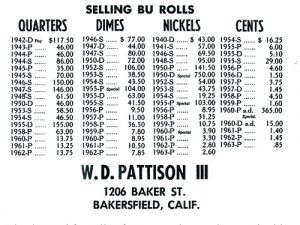
made as the collector base was still gathering strength. This practice continued through the 1840s and early 1850s. The one and only coin dealer at this time, was the Philadelphia Mint, though some collectors would have small circles of friends with whom to trade duplicates or sell scarcer pieces. It was still social distancing, and little had really changed from the 1790s except that there were a few more collectors on the numismatic scene.
In the mid–1850s change came to the world of coin collecting. No longer were individual collectors isolated from their peers, but the numismatic world was beginning at last to be a cohesive group of like-minded people. As late as 1858, the Philadelphia Mint was still the key player in supplying new coins to collectors, but this was about to change, thanks in part to something that took place in 1857.
The old copper cent and half-cent ceased to be coined that year, and a new and smaller copper-nickel cent appeared. Many people then tried to put together date sets, especially for large copper cents. By 1860, two significant events came about that changed numismatics positively. More dealers appeared on the scene, and small groups of collectors in the major cities, such as Philadelphia, New York, and Boston, gathered to discuss coins and medals as well as display their latest acquisitions. The Civil War era, from 1861 to 1865, was a period of healthy and regular numismatic activity from dealers to auctions.
At war’s end, the activity continued with an increase in dealer numbers as well as clubs formed for like-minded people interested in coins and medals. Except for limited interest in Confederate paper money, there was little going on concerning other forms of paper currency. Throughout the 1870s and 1890s, clubs continued to form. However, most were low-key in that not all that many collectors were involved. However, the explosion of numismatic interest during the Civil War had moved the collecting world into a new stage, just as it is occurring presently with the COVID–19 pandemic.
Impact of a Developing Dealer Base
The Philadelphia Mint continued to serve as a primary dealer, but its products were primarily proof coins and medals. Before 1900, medals were much more in demand than would be the case in the future. That is, until, a revival of interest in the 1960s, with the Franklin Mint and others. One major impetus for increased togetherness in the collecting world came in 1891 when Dr. George Heath founded the American Numismatic Association (ANA). From that small beginning came a great national organization that caters to the collectors of large and modest means. The ANA began publishing a magazine that provided general numismatic information and gave space to dealers advertising their wares. Until that time, individual dealers issued their own publications, which performed similar duties but on a lesser scale than the ANA’s magazine, The Numismatist.
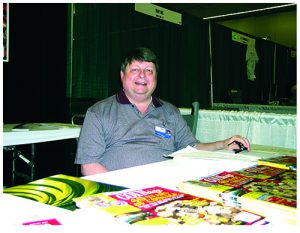
By 1900, modern numismatic activity was in place, though with limited numbers of people compared to the 1960s through the 1980s, when activity might even be called frenzied. The 1920s continued the earlier trends with an increasing number of clubs, auction sales, and the like. That decade proved one of the best to date, but all would come crashing down in 1931 when the Great Depression mounted its final attack on U.S. citizens, just as the COVID–19 has done today differently.
Some think that the large number of commemorative coins struck in the 1930s indicates a revival of numismatics, such was not the case. There was some improvement, but on the whole, the special half-dollars did not go to collectors but rather to local citizens interested in the historical association of the coins.
There was one glimmer of hope during these years, which was the resumption of proof coinage in 1936. Sales were not all that large and did not pass 20,000 sets until 1942 when the series abruptly ended due to World War II. The world of numismatics was now about to enter a new stage of existence, and the social distancing, however strong or weak, would be discarded.
During World War II, numismatics was more or less in a holding pattern. Meetings of collectors at convention sites or auctions were restricted because of difficulties in traveling by rail or automobile. An example of travel difficulties involved challenges in getting enough gasoline for a trip or the worse problem of replacing damaged tires. Auctions took place in some of the major cities, such as New York, but attendance was thin and, except for dealers, almost entirely local. Dealers were always available in those cities to execute bids at a nominal fee for those collectors unable to attend a major auction sale during the war. This method of buying at auction is, of course, still widely used.
War’s end in 1945 was to bring enormous changes to the American landscape, not the least of which was a sudden and growing interest in the history of our country through its long and varied coinage history.
Proof coinage resumed in 1950, and by 1954 coin conventions, such as that of the ANA, as well as auctions, were experiencing an increase in participation. From the 1950s through the 1980s, numismatic activity was almost frantic at times, with massive buying and selling. For many, it seemed that the ever-increasing prices and demand would never end. But it did end, though slowly at first.
The period of about 1955 through the 1980s may be described, in modern terms, as the exact opposite of social distancing. Aisles at coin conventions were often packed with people waiting to see the coins offered by a favorite dealer. Since the 1980s, little has changed in the overall aspects of coin collecting. However, there has been, at times, a roller-coaster ride in interest and values. For the last few years, not all that many new collectors have entered the numismatic world, which has naturally been a concern to older collectors.
Numismatic activity, except by mail and internet, came to a crashing halt in March 2020 as the global pandemic picked up steam and affected a growing number of people. The government responded in the only way possible, by shutting down the economy and requiring social distancing to the fullest extent possible.
What, then, is the long-term outlook for numismatics when the virus is no longer the threat it is today? It will be a slow road to full recovery. Conventions and public auctions will suffer in the short run and perhaps the long term as well. The lack of new blood in the hobby will also affect recovery.
Presently, the United States Mint seems intent on issuing an
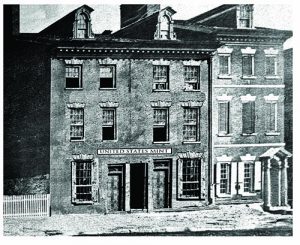
increasing number of odd coins with strange finishes. And Congress has added its point of view with demands that include special shapes, such as incuse on one side and high curved relief. One recent report even has the Mint planning coins with colorized finishes. These variations will, in the short term, attract those interested in a particular topic, such as baseball. Still, again, in the long run, the buyers will have scant interest in coin collecting, and the hobby will have gained little or nothing in the process.
Do you recall the advent of the State Quarter program or National Parks coin issues? At first, it seemed that the state quarters and then the national parks series would generate new faces in the collecting world, but this has also proven illusory. And the answer when the virus ceases to be a threat? As the memory of the pandemic fades, there will be increased attendance at conventions and auctions, especially the former. Some collectors, however, will do most or all of their buying and selling on the internet. And what of the local coin clubs? The smaller clubs will struggle for existence and hopefully will weather the virus storm.
All in all, as we’ve seen, the present situation within the world, is unique to itself, but as some of the examples here show, it shares aspects of previous uncertain and challenging moments in history, which ultimately led to innovation, progress, and growth.
Join the COINage Community!
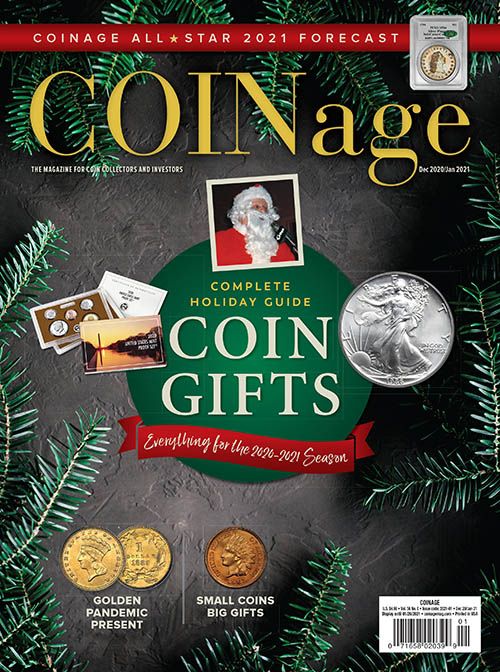 Stay in the know with the latest numismatic news and happenings by subscribing to COINage.
Stay in the know with the latest numismatic news and happenings by subscribing to COINage.













